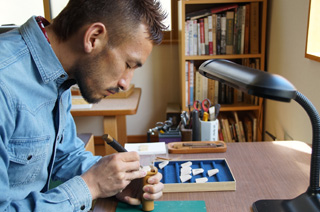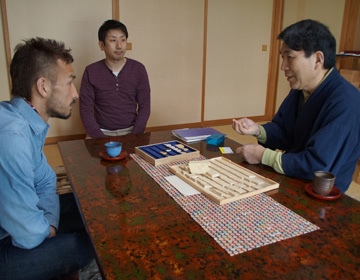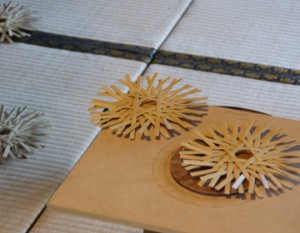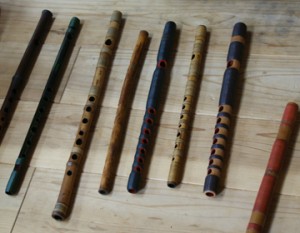Oldest “shogi” pieces date back to the late Heian period
The game of “shogi” which has a very long history, is said to have originated in ancient India in its original form, and it’s not certain when the game came into Japan. There are several theories about the origin of the game, and some say that the game was brought to Japan in the 6th century. However, as tangible proof we have some “shogi” pieces from the late Heian period.
That was told by father and son Kazuo and Ryo Sakurai who are craftsmen who make “shogi” pieces.
Some ”shogi” pieces were found at the ruins of Kofukuji Temple in Nara. There were also pieces from the late Heian period dug up from a ruin in Sakata, and they were similar in design to the current day “shogi” pieces.
The Sakurais make “shogi” pieces in a city called Tendo in Yamagata prefecture. “Shogi” piece production started in late Edo period, and by the Meiji era, it became widespread among the populace. Tendo was a major production base along with Osaka. Among the more traditional types is “kaki goma” where the letters are directly written onto the pieces with “urushi” lacquer.

How “shogi” pieces are made
The main material Sakurai uses to make the “shogi” pieces is boxwood. The same used in edo-style cabinets. These are cut into boards during the winter and dried. Then the good parts of the boards are cut out and used as pieces, with the characters written on them. Boxwood has even vessels and is easy to work on, and develops a nice luster with proper care as is evident in combs, making it the perfect material.
There are various styles in writing the characters, like the traditional Tendo style of brushing them on the pieces, or carving the characters before actually brushing on the lacquer. ”What kind of pieces are considered high grade?” Nakata asked and Sakurai showed us pieces called “moriage koma” (piled up piece) in which the characters are first sculptured, then the “urushi” lacquer is layered on giving it height. This creates a 3-dimensional effect, and the characters look larger and stronger. These are used in “shogi” title matches.
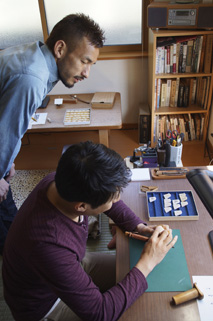
Making the characters 3 dimensional
Sakurai hands a piece to Nakata so he can experience carving and painting. Again, it was not a simple task. “Shogi” pieces actually are not that big. Carving kanji characters onto the pieces is a challenge in itself. Even using a piece of paper with the character written as a guide, it is very difficult. Layering “urushi” lacquer also requires very careful work. Being careful not to go over the line after filling in the carved character, Nakata somehow managed to paint the character.
When Nakata was about done, he asked Sakurai how he got into this profession. “Oh I wanted to make something with my hands, and I found this tradition of “shogi” pieces in Tendo.“ he answered.
The sight of men relaxing and enjoying a game of “shogi” on the terrace is a nostalgic Japanese scene. And the tension of title matches is also irresistible. In both scenes, the sharp sound of the “shogi” piece hitting the board “straightens your back” as the Japanese expression goes. We’d like to keep hearing that sound.
